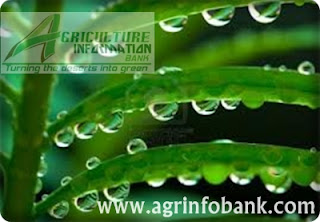Advertisement
Sunday, March 24, 2013
“Engine Room” Of A Plant
Every plant needs at least some light in order to grow and prosper, but the amount really varies. Mushrooms (which are actually fungi), for instance, can grow in bins in a dim basement or shed; daisies and water lilies, on the other hand, crave hot, full-on sunshine. Plenty of plants rest in the middle of these two extremes, of course. And some plants, like azaleas and daylilies, grow well enough in less-optimum light but don’t flower well in the shade. In terms of labeling, just remember that full sun usually means six or more hours per day; part-day, of course, refers to less.
You may assume that flowers drink up the light, but actually, the leaves do most of the work. Leaves are the main “Engine Room” Of A Plant. For a plant to operate, thrive, and increase in size, all plant parts (except flowers) need to play their roles in photosynthesis. Roots draw in water, but the real energy production takes place primarily in the foliage. Light helps produce the fuel.
Long hours of plentiful sunlight, with varying angles throughout the day, are important so that every leaf — even the ones lower down on the plant — gets the chance to receive light. The good news is that no matter what light conditions your yard has to offer, at least something should be able to grow there.
Sun plants and shade plants are labeled, and of course gardeners try to accommodate them. If you need plant ideas along these lines, not to worry —the plant chapters in this book have plenty of suggestions for you.
The warmth of the sun, even more than actual light, inspires flowers to unfurl. Sunlight from the east (morning light) is considered cooler, and western sun (afternoon light) can be scorching. Many plants prefer a site with some morning sun, even until midday, and late-afternoon shade. Other plants are able to endure even the hottest conditions. A plant’s tolerance, of course, varies by region. You can place the same plant in a sunnier spot in the far North than in the South.
If you have plants growing in a spot that receives a blast of late-afternoon sun, be sure to monitor their water needs closely so they don’t dry out. If you find they’re struggling, you can help them by installing something to cast a shadow, such as an arbor, or by planting a tree or large shrub in just the right spot. Even companion perennials or annuals planted nearby can cast enough shade to bring needed relief.
 Here are some signs that a plant is getting too much sun:
Here are some signs that a plant is getting too much sun:
ü Flower petals dry out.
ü Leaf edges look burnt or dried.
ü Flower color looks faded or washed out.
ü The entire plant starts to flag.
And here are signs that a plant isn’t getting enough light:
ü Growth is sparse.
ü Stems are lanky and spindly.
ü The distance between leaves, where they’re attached to the stems, is especially wide.
ü You see fewer flower buds and, thus, fewer flowers.
ü The entire plant leans toward the light sources.
Some of figuring out the proper location is trial and error — you’re aware that roses like a full day of sun, but you really want that bush to go in the nook that gets afternoon shade. Give the spot a try. If the plant’s unhappy, you can always move it to a more appropriate spot.














0 comments:
Post a Comment